#visual continuum
Text

.310.
#graphic design#illustration#graphic art#digital art#geometry#linework#digital design#design#space#art#visual continuum#visual art#art direction#logo#logo design#illusion#square#graphics#poster design
23 notes
·
View notes
Text
https://www.washingtonpost.com/science/2023/06/28/gravitational-wave-background-nanograv
The mind-bending finding suggests that everything around us is constantly being roiled by low-frequency gravitational waves
By Joel Achenbach and
Victoria Jaggard
June 28, 2023 at 8:00 p.m. EDT
The very fabric of the cosmos is constantly being roiled and rumpled all around us, according to multiple international teams of scientists that have independently found compelling evidence for long-theorized space-time waves.
The claim that telescopes across the planet have seen signs of a “gravitational wave background” has sent a thrill through the astrophysics community, which has been buzzing for days in anticipation of the papers that were unveiled late Wednesday. The discovery seems to affirm an astounding implication of Albert Einstein’s general theory of relativity that until now has been far too subtle to detect.
In Einstein’s reimagined universe, space is not serenely empty, and time does not march smoothly forward. Instead, the powerful gravitational interactions of massive objects — including supermassive black holes — regularly ripple the fabric of space and time. The picture that emerges is a universe that looks like a choppy sea, churned by violent events that happened over the course of the past 13 billion-plus years.
The gravitational wave background, as described by the astrophysicists, does not put any torque on everyday human existence. There is not a weight-loss discovery in here somewhere. A burble of gravitational waves cannot explain why some days you feel out of sorts. But it does offer potential insight into the physical reality we all inhabit.
“What we measure is the Earth kind of moving in this sea. It’s bobbing around — and it’s not just bobbing up and down, its bobbing in all directions,” said Michael Lam, an astrophysicist at the SETI Institute and a member of the North American Nanohertz Observatory for Gravitational Waves (NANOGrav), a team largely based in North America. The NANOGrav team released the findings in five papers that were published Wednesday in the Astrophysical Journal Letters.
Teams in Europe, India, Australia and China also observed the phenomenon and planned to post their studies at the same time. The simultaneous release of papers from far-flung and competitive teams using similar methodology came only after some scientific diplomacy that ensured no group tried to scoop the rest of the astrophysical community.
“We’ve been on a mission for the last 15 years to find a low-pitch hum of gravitational waves resounding throughout the universe and washing through our galaxy to warp space-time in a measurable way,” NANOGrav chair Stephen Taylor of Vanderbilt University said at a news briefing Tuesday.
“We’re very happy to announce that our hard work has paid off.”
Discovery from dead stars
The feat builds on previous discoveries of things in the universe that are invisible to the naked eye — pulsars. A pulsar is a type of neutron star, the ultradense remnant of a dead star. It is called a pulsar because it spins rapidly, hundredsof revolutions per second, and emits radio waves in a steady pulse. Pulsars were discovered only in the 1960s, not long after the invention of large radio telescopes.
NANOGrav gathered data from 68 pulsars using the Green Bank Telescope in rural West Virginia, the 27 telescopes of the Karl G. Jansky Very Large Array in New Mexico, and the now-defunctArecibo Observatory in Puerto Rico.
The pulses from these bizarre objects reach telescopes on Earth at such predictable frequencies that they serve as cosmic timepieces, nearly as accurate as today’s most advanced atomic clocks, said Chiara Mingarelli, an astrophysicist at Yale and a member of the NANOGrav team.
Theorists believed that low-frequency gravitational waves could throw off the arrival of pulsar signals. Such low-frequency ripples can have crests separated by years, so the search for subtle swells in the sea of space-timerequired patience. The deviation in the pulsar data is so slight that it took 15 years of observations to come up with solid evidence of these gravitational waves, Mingarelli said.
The NANOGrav team had previously published reports with preliminary suggestions that the background exists, but had said more time was necessary to boost confidence that the signal was real and not just noise.
“Even devising the experiment was a huge mental leap,” Mingarelli said.
The existence of gravitational waves is not in dispute. In 2016, scientists announced that their ambitious four-decade experiment called LIGO, for Laser Interferometer Gravitational-Wave Observatory, had detected waves from the merger of two black holes. But the newly announced waves are not one-shot wonders, and theorists are noodling the many potential explanations for why the cosmic sea ripples in such a fashion.
Supermassive black holes are the favored explanation.
Most galaxies are home to supermassive black holes in or near their central region. These black holes certainly deserve the “supermassive” label: They typically have the equivalent mass of millions or even billions of suns. By contrast, “stellar mass” black holes are pipsqueaks, with masses akin to 10 or 20 or 30 suns.
Galaxies rarely collide, but the universe is vast, there are many billions of galaxies, and they have had plenty of time to drift into one another. During a galactic meetup, theorists say, the supermassive black holesat the cores of the two galaxiesfirst will do a gravitational dance. They can orbit each other for millions of years, Lam said. This pairing is known as a supermassive black hole binary.
The swirling dance disturbs the fabric of space-time sufficiently to generate very low-frequency gravitational waves that travel across the universe at the speed of light, scientists believe. Over time, energy leaks from the dance party, as it were, and the supermassive black holes ease closer together, their orbital period shortening to just a few decades. At that point, the wavelengths begin to reach the frequencies detectable by NANOGrav, Lam said.
“So at this point in our measurements, we cannot definitively state what sources are producing the gravitational wave background signal,” NANOGrav team member Luke Kelley, an astrophysicist at the University of California at Berkeley, said at the Tuesday news briefing. However, he said, the data is a compelling match for theoretical predictions.
Theorists are “having fun” coming up with other possible sources for the low-frequency signal, he added. But “if it’s not coming from supermassive black hole binaries, we would need to come up with some explanation of where those supermassive black holes are hiding, and why we’re not seeing their gravitational waves.”
A new astronomical era
No matter the signal’s source, the announcement of a gravitational wave background represents a milestone in the embryonic field of gravitational wave astronomy.
Just as some astronomers use different wavelengths of light to probe the cosmos, they can now look for different types of gravitational waves. The low-frequency waves announced Wednesday wouldn’t be detectable by LIGO, and the opposite is also true: NANOGrav and similar efforts using pulsars could not detect the kind ofhigh-frequency waves from the unimaginably violent stellar-mass black hole mergers seen by LIGO.
Lam said the next goal is to pair specific gravitational waves with potential supermassive black hole binaries detected through more traditional forms of astronomy. In other words, rather than just saying we’re picking up signs of lots of waves, the astronomers could say this particular wave right here came from that place over there.
The announcement carries an echo of another milestone in the history of cosmology. In 1965, two physicists at Bell Labsreported that they had detected the signal of something previously theorized: the cosmic microwave background radiation. That residual glow offered landmark evidence that the universe was created by the big bang.
Maura McLaughlin, co-director of the NANOGrav Physics Frontiers Center, said at the Tuesday briefing that the next step will be for the international teams to combine their independent data into one “uber data set” that should show an even clearer signal of the gravitational wave background — and maybe even the first detection of a supermassive black hole binary.
“We’re opening up a completely new window … on the gravitational wave universe,” she said.
The work, she said,should offer deeper insight into the ways galaxies form and evolve. It might even reveal exotic new physics that would alter our fundamental understanding of the cosmos: “It should be really, really exciting.”
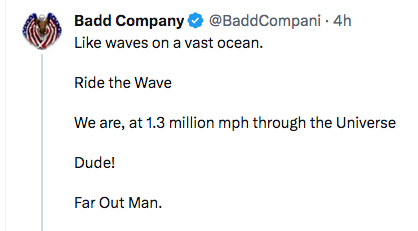
#eddies#eddies in the space-time continuum#well tell him to get out#it is worth noting that one of my main impressions from a series of investigative shroom journeys was seeing a sort of 3d grid#the grid was my mind trying to visualize the waves surrounding thing and the grid kinda worked. Next dimension visualization.
15 notes
·
View notes
Note
how do you extract BB story mode sprites? I’ve been trying to get my hands on these sprites of Mu/Noel(?) for so long but no luck(not in it’s full body glory but yk..), all I know is that it appears in BBCS and maybe BBCP and BBCF too??

The files for this version of her story portraits were not in CF. I did find them in CS though. However, like all of the other story portrait files, they're broken up between a main body with no face and the facial expression images that they overlap on top of the body. So if you want a proper image, you'll need to use an image editor to layer the face on top of the body yourself.
However, I'll save you the time of extracting the files at least and simply did so myself and put them in a .zip in a Google Drive: https://drive.google.com/file/d/1e4zvkqXY8PH2XI5_XN-LA0snxglb0tMj/view?usp=sharing
However, if you actually are curious on how I extract files, I use this tool called, GeoArcSysAIOCLITool.
Found the story mode portrait files for Mu-12 in this directory within the game's installation folder:
"BlazBlue Chronophantasma Extend\data\Story\Avatar\mu"
Took the .pac files in that folder, put them in "GeoArcSysAIOCLITool\Batch\PAC\GeoArcSysAIOCLITool - PAC - Unpack Recursive.bat" to unpack all of the .pac files. And then that should produce a folder called "mu_unpack" which contains even more folders with .hip files in them, the image format ArcSys uses in BB games.
Then I placed that folder in "GeoArcSysAIOCLITool\Batch\GeoArcSysAIOCLITool - HIP.bat" to convert all of the .hips into .pngs. Then I just used the Windows Explorer search option to find all of the .pngs, pressed Ctrl+A and then saved them all into a .zip to put them into one place instead of digging through each folder.
#blazblue#mu-12#modding#story mode portraits#files#file extraction#bbcs#blazblue continuum shift#story mode#visual novel#vn
4 notes
·
View notes
Photo
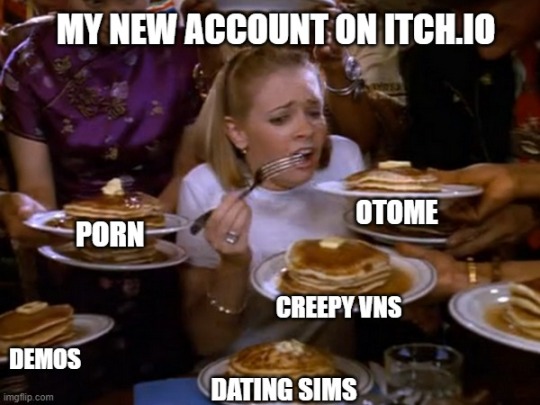
This is me today and I am pleased as punch about it!
#itch.io#otome game#visual novel#datingsim#please may i have some more#i've been ever so good#i'll need to break the space-time continuum to finish all these but okay#give me fuel give me fire give me that which I desire
6 notes
·
View notes
Photo
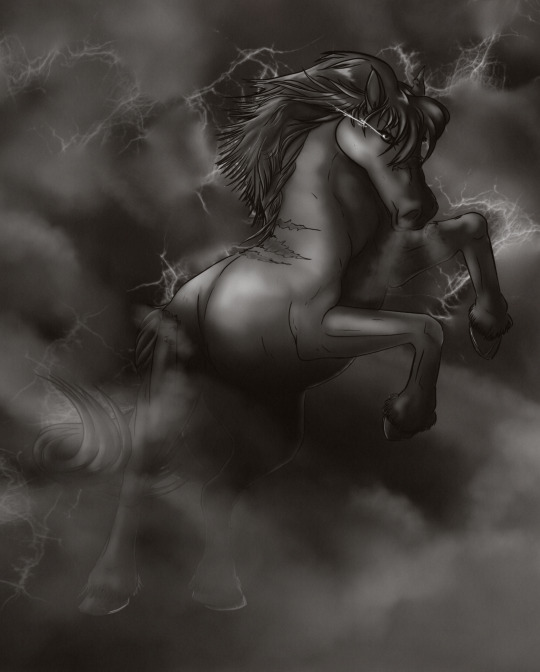
Kuda, wild horse god.
#dnd#Continuum#when I was approached to create the concept visual for this god I was immediately like yes please!#I like drawing horses#and this one reminded me of black stallion#a glorious beast brought to heal to serve other gods
10 notes
·
View notes
Text

[ finally a ] tag dump //
* ⊹ 。*´ ❪ author. ❫ ››› ㅤ we are bees then﹐ our honey is language .
* ⊹ 。*´ ❪ promotion. ❫ ››› ㅤ come﹐ little bees﹐ the flowers have your breakfast ready .
* ⊹ 。*´ ❪ announcement. ❫ ››› ㅤ we must dissent from apathy﹐ we must dissent from the fear .
* ⊹ 。*´ ❪ prompt. ❫ ››› ㅤ doves and pigeons can also be trained to send messages .
* ⊹ 。*´ ❪ anonymous. ❫ ››› ㅤ who is this stranger﹐ who comes in the darkness ?
* ⊹ 。*´ ❪ continuum. ❫ ››› ㅤ time doesn’t erase the demons we don’t see .
* ⊹ 。*´ ❪ euphuism. ❫ㅤ ››› ㅤi am shouting at the empty and always running .
* ⊹ 。*´ ❪ episteme. ❫ㅤ ››› ㅤyou strike a match on yourself to keep others warm .
* ⊹ 。*´ ❪ visuals. ❫ㅤ ››› ㅤi ain't good﹐ i ain't bad﹐and i sure as hell ain't ugly .
* ⊹ 。*´ ❪ imagery. ❫ㅤ ››› ㅤthe graveyard shift has a certain quality to it .
* ⊹ 。*´ ❪ thesis. ❫ㅤ ››› ㅤnothing of me is original : i am the combined effort of everyone i've ever known .
* ⊹ 。*´ ❪ theory. ❫ㅤ ››› ㅤthe revelation of a submerged self .
* ⊹ 。*´ ❪ behavior. ❫ㅤ ››› ㅤpretend to be a cynic﹐ but i am really a dreamer .
#* ⊹ 。*´ ❪ author. ❫ ››› ㅤ we are bees then﹐ our honey is language .#* ⊹ 。*´ ❪ promotion. ❫ ››› ㅤ come﹐ little bees﹐ the flowers have your breakfast ready .#* ⊹ 。*´ ❪ announcement. ❫ ››› ㅤ we must dissent from apathy﹐ we must dissent from the fear .#* ⊹ 。*´ ❪ prompt. ❫ ››› ㅤ doves and pigeons can also be trained to send messages .#* ⊹ 。*´ ❪ anonymous. ❫ ››› ㅤ who is this stranger﹐ who comes in the darkness ?#* ⊹ 。*´ ❪ continuum. ❫ ››› ㅤ time doesn’t erase the demons we don’t see .#* ⊹ 。*´ ❪ thesis. ❫ㅤ ››› ㅤnothing of me is original : i am the combined effort of everyone i've ever known .#* ⊹ 。*´ ❪ episteme. ❫ㅤ ››› ㅤyou strike a match on yourself to keep others warm .#* ⊹ 。*´ ❪ imagery. ❫ㅤ ››› ㅤthe graveyard shift has a certain quality to it .#* ⊹ 。*´ ❪ euphuism. ❫ㅤ ››› ㅤi am shouting at the empty and always running .#* ⊹ 。*´ ❪ behavior. ❫ㅤ ››› ㅤpretend to be a cynic﹐ but i am really a dreamer .#* ⊹ 。*´ ❪ theory. ❫ㅤ ››› ㅤthe revelation of a submerged self .#* ⊹ 。*´ ❪ visuals. ❫ㅤ ››› ㅤi ain't good﹐ i ain't bad﹐and i sure as hell ain't ugly .#tag dump //
0 notes
Text

* ⊹ 。*´ ❪ author. ❫ ››› ㅤ we are bees then﹐ our honey is language .
* ⊹ 。*´ ❪ promotion. ❫ ››› ㅤ come﹐ little bees﹐ the flowers have your breakfast ready .
* ⊹ 。*´ ❪ announcement. ❫ ››› ㅤ we must dissent from apathy﹐ we must dissent from the fear .
* ⊹ 。*´ ❪ prompt. ❫ ››› ㅤ doves and pigeons can also be trained to send messages .
* ⊹ 。*´ ❪ anonymous. ❫ ››› ㅤ who is this stranger﹐ who comes in the darkness ?
* ⊹ 。*´ ❪ continuum. ❫ ››› ㅤ time doesn’t erase the demons we don’t see .
* ⊹ 。*´ ❪ euphuism. ❫ㅤ ››› ㅤi am make - believe. this is an archive. it hurts to be a story .
* ⊹ 。*´ ❪ episteme. ❫ㅤ ››› ㅤanger travels through me﹐ pushes aside everything else in my heart .
* ⊹ 。*´ ❪ visuals. ❫ㅤ ››› ㅤburial by fire is the last mercy: decay is for the living .
* ⊹ 。*´ ❪ imagery. ❫ㅤ ››› ㅤi build a life and i tear it apart﹐ and the sun keeps shining .
* ⊹ 。*´ ❪ thesis. ❫ㅤ ››› ㅤwho am i when i feel ? what dies in me when i am me ?
* ⊹ 。*´ ❪ theory. ❫ㅤ ››› ㅤbut would you know yourself if you weren’t burning .
* ⊹ 。*´ ❪ behavior. ❫ㅤ ››› ㅤthey made you a weapon and told you to find peace .
#* ⊹ 。*´ ❪ author. ❫ ››› ㅤ we are bees then﹐ our honey is language .#* ⊹ 。*´ ❪ promotion. ❫ ››› ㅤ come﹐ little bees﹐ the flowers have your breakfast ready .#* ⊹ 。*´ ❪ announcement. ❫ ››› ㅤ we must dissent from apathy﹐ we must dissent from the fear .#* ⊹ 。*´ ❪ prompt. ❫ ››› ㅤ doves and pigeons can also be trained to send messages .#* ⊹ 。*´ ❪ anonymous. ❫ ››› ㅤ who is this stranger﹐ who comes in the darkness ?#* ⊹ 。*´ ❪ continuum. ❫ ››› ㅤ time doesn’t erase the demons we don’t see .#* ⊹ 。*´ ❪ euphuism. ❫ㅤ ››› ㅤi am make - believe. this is an archive. it hurts to be a story .#* ⊹ 。*´ ❪ episteme. ❫ㅤ ››› ㅤanger travels through me﹐ pushes aside everything else in my heart .#* ⊹ 。*´ ❪ visuals. ❫ㅤ ››› ㅤburial by fire is the last mercy: decay is for the living .#* ⊹ 。*´ ❪ imagery. ❫ㅤ ››› ㅤi build a life and i tear it apart﹐ and the sun keeps shining .#* ⊹ 。*´ ❪ thesis. ❫ㅤ ››› ㅤwho am i when i feel ? what dies in me when i am me ?#* ⊹ 。*´ ❪ theory. ❫ㅤ ››› ㅤbut would you know yourself if you weren’t burning .#* ⊹ 。*´ ❪ behavior. ❫ㅤ ››› ㅤthey made you a weapon and told you to find peace .
1 note
·
View note
Text
Yuri of Absence and The Chair of Yuri: Combining Lesbian Manga and Science Fiction - The Secret Garden
This article was originally written in 2021 as part of The Secret Garden, YuriMother's exclusive series of articles, available only for Patrons. If you want to access other articles and help support Yuri and LGBTQ+ content, subscribe to the YuriMother Patreon.
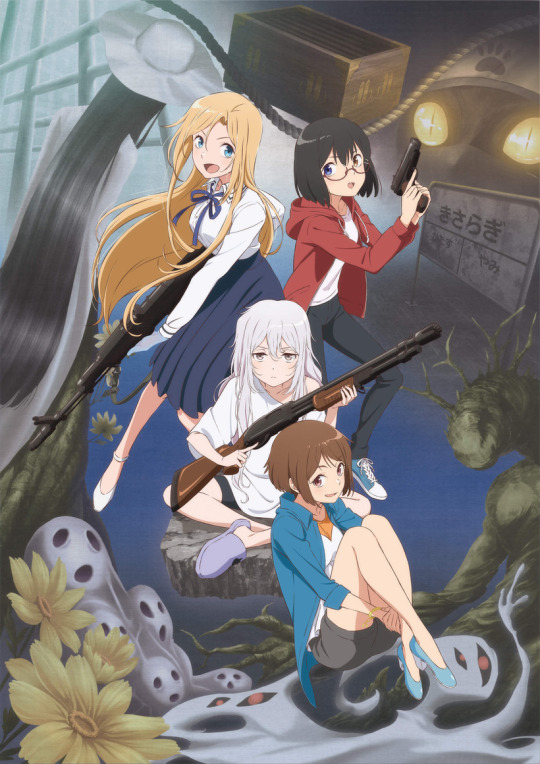
In the “olden days” of Yuri, which is really to say anything in the ‘00s or earlier, there was not much variety in the mainstream Yuri market. If you wanted to read a manga about the romance between two women or watch an anime with clear lesbian elements, choices were between a sweet school story or a classic tragic school Yuri story. As I have mentioned many times recently, one of the most significant advancements in the recent Yuri genre is the advent of sub-genres. Once considered an element or subgenre itself, Yuri hosts various works from isekai to feminist literature. However, one of the most curious and certainly most well-known subgenres is science fiction.
Yuri science fiction is in the spotlight right now, with everything from visual novels like Synergia to webcomics like Ratana Satis’s Soul Drifters. However, one of the most prolific and rightly celebrated titles is Iori Miyazawa’s Otherside Picnic. The series began publishing under Hayakawa’s Bunko JA imprint in 2017, and over the past few years, it exploded onto the scene. It has an upcoming sixth book, a manga adaptation serialized in Monthly Shounen Gangan, healthy overseas publishing, and of course, an anime adaptation helmed by Kase-san and Stiens;Gate director Takuya Sato. It has garnered praise from critics CBR, Anime News Network, and Erica Friedman of Okazu. I wrote glowing reviews for the first few books, complimenting its worldbuilding, pacing, and characters. However, Otherside Picnic did not spring out of anywhere. Indeed, it is the product of gradual shifts in Yuri and sci-fi storytelling and Miyazawa’s genius theories and knowledge of the genres.

The mixture of Yuri and science fiction is not anything new; it predates most other forms of Yuri save Class S school romances. You may not picture many of these when you think of modern Yuri sci-fi, but as early as 1975, we had Yuri stories like Boku no Shotaiken that included small sci-fi elements, in this case, transferring the mind to another body. Over the next two decades or so, a time during which so few Yuri titles surfaced, it is occasionally referred to as Yuri’s “era of Darkness,” multiple titles sci-fi titles including Dirty Pair, Project A-Ko, Bubblegum Crisis, and Iczer featured science fiction settings and Yuri elements. At this time, Yuri was not much of a genre as we think of it today, but more of a factor inserted into a larger narrative. Think of Yayoi and Shion from Psycho-Pass for a more contemporary example. In fact, except for Iczer, none of these titles feature any outright lesbian characters, just female casts with “Yuri-ish” moments of women standing close together and being companions.
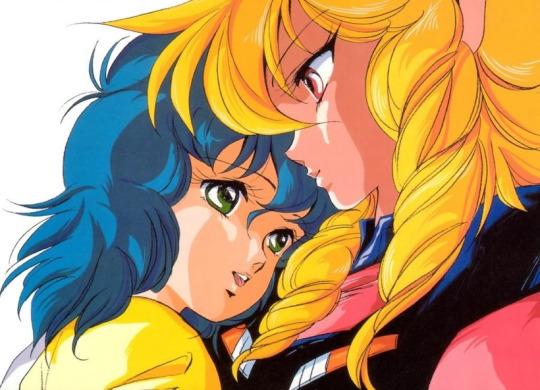
These titles feature two key elements that many current series have shifted further away from, soft sci-fi and Weak Yuri. Soft, as opposed to hard science fiction, is the more established of these two scales. Science fiction can be separated between outlandish and impossible ideas, sometimes known as science fantasy, and those based in reality, research, and the hard sciences such as physics, astronomy, and mathematics. Sorting works between these two labels is, ironically, not an exact science, and fans and critics alike argue about their precise definitions. However, let us consider soft and hard science as a spectrum, with outlandish premises like Dragonball on the soft end and the reality-based concepts of Space Brothers at the other. One can sort most titles along this continuum. M Alan Kazlev does an excellent job dissecting this scale in further detail. Many of the titles we enjoy today, including Otherside Picnic, inhabit this transitory space, as it is not fantasy. Still, its reliance on anthropology and psychology’s soft sciences may put it a small step below more grounded hard sci-fi. Still, it is far above the aliens and superpowered robots in ‘80s anime, so we shall consider it hard sci-fi for the sake of this argument.
*Note: Many science fiction circles use the abbreviation sci-fi for soft science fiction and SF for hard science fiction. For ease of readability and common vernacular, this article uses “sci-fi” for both instances.*
Sci-fi Yuri did not break out of soft science fiction territory until very recently. In the 1990s, Yuri underwent dramatic changes thanks to Sailor Moon and Revolutionary Girl Utena, which helped reform it as a genre rather than a feature. Maria Watches Over Us revived S Yuri traditions, and new titles were set in schools and focused on modern girls’ lives. In the 2000s, Yuri magazines began serialization and featured stories such as Kisses, Sighs, and Cheery Blossom Pink and Strawberry Shake Sweet (both serialized under different names). Despite being primarily aimed at adult women, the magazine found success with male audiences, prompting new stories appealing to men and boys. These works reintroduced action and science fiction into the genre with pieces like Kannazuki no Miko: Destiny of the Shrine Maiden, Blue Drop, and Kashimashi: Girl Meets Girl (Yuriboke does a better job breaking all these down). However, all these were still vehemently in soft sci-fi territory, with Kashimashi’s only surreal element being an alien because the author was, to simplify grossly, unable to fathom the existence of transgender people (coming full circle from Boku no Shotaiken). Possibly the only contemporary mainstream hard sci-fi title to include Yuri and enjoy a modicum of success was Qualia The Purple. However, this series did not have the genre-defining power that later works would.

However, what changes between these series and those mentioned earlier is the Yuri itself. The relationships become much more explicit and central to the plot. You can deliberate whether or not Bubblegum Crisis is sapphic, but just try sitting someone down and arguing that Kannazuki no Miko is not built around the crux of two women holding romantic interest in each other. Yuri science fiction author Gengen Kusano proposes a dichotomy similar to soft and hard sci-fi to analyze these titles, Weak and Strong Yuri. He explains it in his own brilliantly convoluted and philosophical way, but in short, Weak Yuri relies on using logic and the mind to make the real imaginary, while strong Yuri is about emotionalism and realism, making fiction into reality.
Strong Yuri is Yuri that focuses on realism through feelings and emotions. Kusano describes it as fiction characters having real emotions. They have strong connections and affection for each other that are real and powerful. The audience experiences the feelings between the characters as they are felt and portrayed. Think of how emotional the exclamations and love, sorrow, confusion, and affection are in titles like Bloom Into You and Citrus. In a sense, they can be so strong that they transcend their fictional confines and become real, as they are experienced by considers, a stage called “radically Strong Yuri.” Most explicit Yuri, which is not subtext or suggestive content but in-your-face lesbianism, is Strong Yuri, although not all Strong Yuri is outright depictions of lesbianism; it is a square rectangle situation, not all rectangles are squares, but all squares are rectangles.
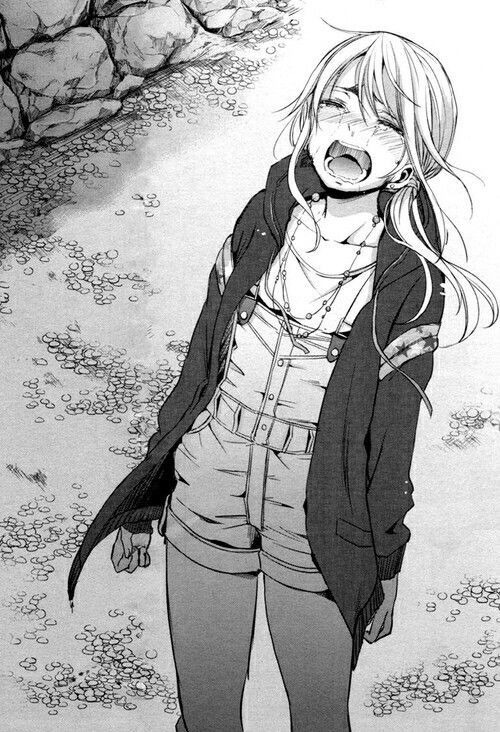
Weak Yuri is cemented in the areas of thought, logic, and epistemology. It deals with the theory of mind, the ability to attribute mental states to others or ourselves. For example, when we see someone smiling or laughing, we may not feel their emotion ourselves, as we do not have direct access to their mind, but we recognize that they are happy. In Weak Yuri, one uses their theory of mind to observe facts and deduce the existence of a Yuri relationship, even if one is not present. So-called “Yuri-ish” titles like Yuru Camp or K-ON! do not outright state or depict romantic or sexual attractions, but is attributed by the viewers onto characters. Said observer witnesses the interactions between girls and, using that factual and observable data, puzzles out a lesbian attraction they prescribe to the subjects, whether real. Shipping culture relies on Weak Yuri’s logic Kusano’s most extreme, “Radical Weak Yuri,” the relationships of real people, like idols, become imaginary through these projections.

Blue Drop and Kashimashi may have been soft Sci-fi, but unlike the soft sci-fi, Weak Yuri series of the twentieth century, they featured Strong Yuri and placed it more as a central aspect of the work with other elements built around, rather than as a side element. The next revolution in sci-fi Yuri came when hard sci-fi titles began production. A few of the principal players here are Kusano himself, Otherside Picnic Creator Iori Miyazawa, and editor Rikimura Mizoguichi, all of whom feature in the viral Yuri Made Me Human interview of Miyazawa. Most of the theories and ideas discussed in this article, including Kusano’s Weak and Strong Yuri arguments, came from these seminars.

It all started with Kusano’s existential widescreen Yuri baroque proletariat hard sci-fi Love Live AU fanfic of the popular ship NicoMaki, consisting of Nico Yazawa and Maki Nishikino. The revised edition of this story, Last and First Idol, was published in 2016 and became the first debut title to win the prestigious Seiun Award in 42 years. Satoshi Maejima’s post-script essay at the end of the Last and First Idol collection gives far more detail into these works’ history. However, Idol was the first prominent story to feature Yuri in a hard sci-fi narrative. It was not perfect. In fact, in its push to feature gruesome content and insane hard sci-fi that Yuri is pushed to the wayside during most of the story.

*Author’s note: The first time I read Last and First Idol, I was completely unaware of its contents, which was a shocking experience; the story comes with a severe content warning).
Last and First Idol did not create a woven hard sci-fi, Strong Yuri narrative. However, it was a definite proof of the concept, a testament that the sprawling details and imagery of hard Sci-Fi could work with Yuri relationships. Kusano’s next short story, Evolution Girls, which would appear alongside Last and First Idol in the collection of the same name, saw the author focus more on emotionalism and create a Strong Yuri work. Nevertheless, Last and First Idol was a massive success. Future hard proof that Yuri hard sci-fi was coming in force came in December 2018, when Hayakawa Shobo ran a special edition of its long-running S-F Magazine featuring Yuri stories. The issue, planned by Rikimura Mizoguchi, proved so popular for the second time in its then 59-year history, the magazine had to reprint before release.

While Kusano was developing theories on Yuri and Hayakawa Shobo worked to push the public eye onto Yuri sci-fi, author Iori Miyazawa was refining his own Yuri premises, ones that, though he did not know it at the time, would not only see Strong Yuri and Hard sci-fi standing side by side in the same story but would synthesis the two into a unique product that could attract new fans and expand the borders of science fiction and Yuri. The work in question, of course, is Otherside Picnic. This light novel series about girls journeying to another world to hunt creatures from occult internet lore is to date Yuri science fiction’s best execution.

As Miyazawa admits, he strives to create Strong Yuri by focusing on emotionalism and realistic characters. However, such character-driven narratives are often at odds with hard science fiction, which requires dense walls of text to explain the complicated science behind its concepts and world. Miyazawa avoids this trap by utilizing Yuri tropes, specifically scenic Yuri and “Yuri of absence,” and integrating Yuri relationship into these explanatory literary lectures. Examining the latter first, rather than using narrative or exposition dialogue to unravel the intelligence behind the world or elements of science fiction, Miyazawa uses the relationship between Sorawo and Toriko.
In Otherside Picnic, explanations of the mysterious Otherside come primarily from two sources, dialogue and Sorawo’s inner monologue. When Sorawo and Torikko discuss a nuance of the paranormal creatures they investigate, it no longer becomes a large infodump but a Yuri scene about their relationship through their interactions and responses. According to both the strong Yuri theory and Yuri’s traditional definition, these emotions and discussions are the crux of the genre – stories about females’ relationships. Similar emotionalism fills Sorawo’s inner monologues, specifically in the frequent romantic admirations of Toriko. Thus, an explanation existing in that same space becomes Yuri, as it mirrors the same emotions and attraction. Merely by placing the usual exposition into interactions and relationships, Miyazawa was able to open hard science fiction to new readers, who may have been apprehensive before because of these text walls.
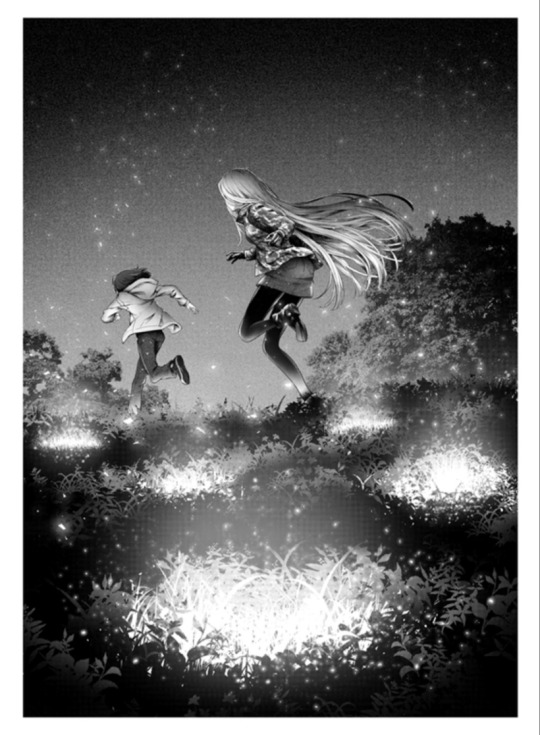
Miyazawa’s other secret weapon is, as he describes it, “Yuri of absence.” Relying on the principles of Strong Yuri, that Yuri is fiction made real through emotions, Yuri of absence extends these parameters outside of characters. As Strong Yuri relies on feeling, not observable data like characters, anything that invokes two women’s feelings together is Yuri. It could be a song, or an empty bench, as one can imagine two women on it and feel emotions tied to that. Of course, taken to its extreme, nearly anything can then be Yuri, as I have joked before, gesturing to an empty chair proclaiming, “Behold, a Yuri!” However, Miyazawa uses this Yuri of absence sparingly, rendering it closer to scenic Yuri’s intimacy.
Scenic Yuri, a particular type of Yuri of absence, focuses exclusively on setting and imagery, a feature that works particularly well in science fiction as according to Masahiro Noda’s “sci-fi is all about images.” Traditional Yuri uses character interaction and supplements it with images and sights that help communicate characters’ emotions and intimacy, like fleeting shots or descriptions of the sky. Take the shot from Kase-san and Morning Girls where Yamada stands by the bus stop. The distance between the girls, the tree in the foreground on Yamada’s side, and the pole on the right all invoke emotion and help tell the girls’ story, distanced by their differences and upcoming life paths. Now remove the girls, the scene remains, as does its meaning and emotions, whether the characters are present or not.
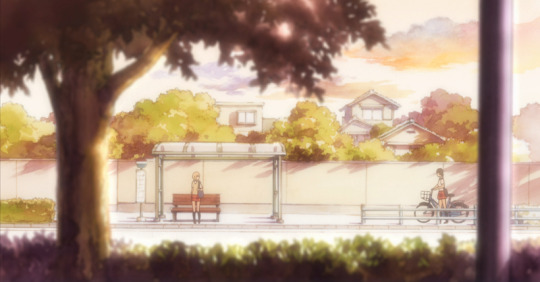
Scenic Yuri is employed vigorously in more male-targeted S Yuri (a minority of the Class S genre). Here, the imagery provides intimacy so that the voyeuristic viewer could look into the characters’ private and forbidden lives, specifically the girls in all-girls schools. Take the shot from Strawberry “Mo Man May Enter Here” Panic. The sweeping view of the Strawberry Dorms atop Astraea Hill, a place where men are forbidden, gives the consumer an exclusive inside look at the private home of its subjects. Otherside Picnic uses these same scenic Yuri principles in its descriptions. In this case, the intimacy does not come from a place where men are prohibited or a shot describing women’s relationships. Instead, the reports of abandoned ruins and deserted open fields where only Toriko and Sorawo exist provide extreme intimacy. It is an emotional view of two of the few women in this world with nothing but each other; thus, Yuri.
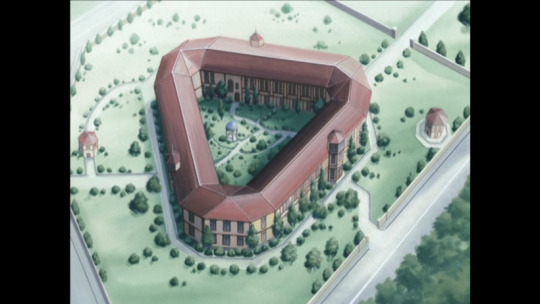
Yuri science fiction is easily the most exciting place in the genre right now. Its creators are experimenting with new theories and storytelling methods to expand the boundaries of what science fiction or Yuri alone could never do. The subgenre has undoubtedly come a long way from its Weak Yuri roots and continues to grow. Industry leaders like Miyazawa and Mizoguichi will continue to push into this excited and uncharted territory, using tactics new and old to bring together Yuri’s emotional and romantic core with science fiction’s epic and provoking imagery. I have few doubts that we have seen all these pioneers have to offer and that Last and First Idol and Otherside Picnic are just the beginning.
Sources
Friedman, Erica, and Kishiji Bando. “Shoujo Yuri Manga Guide.” Yuricon, 29 Mar. 2011, https://www.yuricon.com/oldessays/shoujo-yuri-manga-guide/.
Hanson, Katherine. Yuri No Boke 百合のボケ 〜百合が好きだ〜: Sci-Fi Yuri Anime and Manga. 17 Feb. 2012, http://yurinoboke.blogspot.com/2012/02/sci-fi-yuri-anime-and-manga.html.
Kit, et al. Tomo Choco Podcast Episode 58: A Trip to the Otherside. https://directory.libsyn.com/episode/index/show/tomochoco5287491142565609/id/14974343. Accessed 18 Feb. 2021.
Komatsu, Mikikazu. “S-F Magazine’s Yuri-Themed Issue Gets Reprints Before Release.” Crunchyroll, https://www.crunchyroll.com/anime-news/2018/12/18/s-f-magazines-yuri-themed-issue-gets-reprints-before-release. Accessed 18 Feb. 2021.
Kusano, Gengen. “[R-18] #SF #矢澤にこ 【SF合同サンプル】最後にして最初の矢澤 - 節足原々(セッソクハラハラ)の小説.” Pixiv, https://www.pixiv.net/novel/show.php?id=4992326. Accessed 18 Feb. 2021.
M Alan Kazlev. “The Scale of Hardness in Science Fiction.” Futurism, https://vocal.media/futurism/the-scale-of-hardness-in-science-fiction. Accessed 18 Feb. 2021.
Masayuki Sakoi. Strawberry Panic S01:E21 - Like a Flower. Madhouse, 2006. tubitv.com, https://tubitv.com/tv-shows/558933/s01-e21-like-a-flower.
Maser, Verena. Beautiful and Innocent: Female Same-Sex Intimacy in the Japanese Yuri Genre. ubt.opus.hbz-nrw.de, https://ubt.opus.hbz-nrw.de/frontdoor/index/index/docId/695. Accessed 18 Feb. 2021.
Miyazawa, Iori, et al. Yuri Made Me Human, Part 2. Translated by Kati_lilian, 24 Aug. 2018, https://teletype.in/@kati_lilian/S1yjBCJgH.
Miyazawa, Iori, and Rikimaru Mizoguchi. Yuri Made Me Human — Interview with Iori Miyazawa. Translated by kati_lilian, May 2018, https://teletype.in/@kati_lilian/SJA8KwjjN.
Moore, Caitlin, et al. “The Winter 2021 Preview Guide - Otherside Picnic.” Anime News Network, https://www.animenewsnetwork.com/preview-guide/2021/winter/otherside-picnic/.167892. Accessed 18 Feb. 2021.
Nicki “YuriMother” Bauman. The History and Future of Transgender Representation in Yuri - The Secret Garden, January 2021 | YuriMother on Patreon. https://www.patreon.com/posts/45495024. Accessed 18 Feb. 2021.
---. “Yuri Is for Everyone: An Analysis of Yuri Demographics and Readership.” Anime Feminist, 12 Feb. 2020, https://www.animefeminist.com/yuri-is-for-everyone-an-analysis-of-yuri-demographics-and-readership/.
Pinansky, Sam. Interview with J-Novel Club’s Sam Pinansky. Interview by Erica Friedman, 1 Oct. 2019, https://okazu.yuricon.com/2019/10/01/interview-with-j-novel-clubs-sam-pinansky/.
Sarantos, Constance. “How Otherside Picnic Breaks the Yuri Genre Mold.” CBR, 10 Jan. 2021, https://www.cbr.com/otherside-picnic-breaks-yuri-genre-mold/.
“「SF冬の時代」は雪解けを迎えた 早川書房・溝口力丸 Vol.1.” KAI-YOU Premium, https://premium.kai-you.net/article/201. Accessed 18 Feb. 2021.
Snapshot. https://www.cbr.com/otherside-picnic-breaks-yuri-genre-mold/. Accessed 18 Feb. 2021.
Takuya Satou. Watch Kase-San and Morning Glories. Sentai Filmworks, 2018. vrv.co, https://vrv.co/series/GYQWD1X1Y/Kase-san-and-Morning-Glories.
Walter, Damien. “Science Fiction vs SciFi vs SF: What Is the True Definition?” Damien Walter, 7 Aug. 2018, https://damiengwalter.com/2018/08/07/science-fiction-vs-scifi-vs-sf-what-is-the-true-definition/.
YuriMother. “LGBTQ Light Novel Review - Otherside Picnic Vol. 1.” The Holy Mother of Yuri, 12 Dec. 2019, https://yurimother.com/post/189635367305.
This article was originally written in 2021 as part of The Secret Garden, YuriMother's exclusive series of articles, available only for Patrons. If you want to access other articles and help support Yuri and LGBTQ+ content, subscribe to the YuriMother Patreon.
#Yuri#otherside picnic#the secret garden#miyazawa yuri#yuri of absence#scenic yuri#lgbt#lgbtq#lgbtq+#queer#gay#lesbian
400 notes
·
View notes
Quote
Touch is the sensory mode which integrates our experiences of the world and of ourselves. Even visual perceptions are fused and integrated into the haptic continuum of the self; my body remembers who I am and how I am located in the world. My body is truly the navel of my world, not in the sense of the viewing point of the central perspective, but as the very locus of reference, memory, imagination and integration. All the senses, including vision, are extensions of the tactile sense; the senses are specialisations of skin tissue, and all sensory experiences are modes of touching, and thus related to tactility. Our contact with the world takes place at the boundary line of the self through specialised parts of our enveloping membrane.
Juhani Pallasmaa, The Eyes of the Skin: Architecture and the Senses
#quote#Juhani Pallasmaa#Pallasmaa#architecture#architectural theory#physiology#sense perception#perception#imagination#human body#sensory#experience#The Eyes of the Skin#memory#biology#observation#seeing#haptic#touch
177 notes
·
View notes
Text
Medium talk is worse than small talk and probably what we're all most afraid of
We all know Small Talk:
hi, how are you, nice weather, how about them (insert sports team here).
Small talk follows algorithms and a kind of ritual pattern. It's the kind of appropriate conversation level for interacting with retail workers in public, and total strangers.
We also all know Big Talk. (I'm only calling it that as the logical inverse implied by Small Talk.) Which is basically where a high degree of familiarity is assumed. A common ND fuckup is conversing in conversational modes that, to many of the general population, are reserved for high familiarity. Either in terms of talking at length about a topic (which I feel is something that was actually more socially acceptable in the past, but has become broadly unacceptable over time; this was NOT really part of a diagnostic category in the 70s) or in terms of overfamiliarity/not being at the right level of social distance from the person for the thing you're talking about.
Most people rely on lots of context cues that inform how they will hear what the other person is saying, and those context cues may not be there for a near-stranger. All they're left with is the most uncharitable possible assumption about your intentions.
So with this in mind, this leaves me with the WORST conversation category, that nobody acknowledges, because we're stuck on Small Talk and Big Talk:
Medium Talk.
You actually need something in common with the other person or something you relate to, to really successfully do Medium Talk. Small talk can be done with total strangers you're never going to see again, and Big Talk can cut past a lot of stuff; I don't need every social belongingness or ideological thing or hobby in common with my family members, or other people in a high-trust relationship with me, to have a meaningful conversation with them.
Medium Talk is actually where a lot of the tripwires and landmines are.
People are making decisions to escalate or de-escalate here, and listening for loyalty indicators. You run the risk of keeping things superficial while missing an actual connectedness bid, or of being overly familiar - or getting too comfortable and offending/scaring the other person before they have any context for processing what you're saying to them.
Medium Talk is when you're moving from the Social Niceties, along the continuum toward Big Talk. You're dipping your toe in the water, moving toward the deep end.
Average to high social skills people will often throw out feelers about escalating the conversation. In the 90s, LGBT people would sometimes drop hints about some or other thing that only other LGBT people would know about, based upon some kind of context cue. There is ultimately some of this same dynamic going on with some forms of nerdy gatekeeping ("name one star war") albeit in a clumsy way.
But people do it all the time.
I think there is a tendency for some people to assume talk is 100% verbal while habitually ignoring the visual and relational context cues that are processed as communication. It's especially hard for people who *can't* process that information, but I think that there are lots of reasons some people end up just not learning to do it.
People often escalate small talk based upon presence of some kind of marker such as a nerdy enamel pin, or a sports jersey. This is what wearing tons of geek swag is actually all about. 70s-80s social skills guides and advice for single people, often advised having/carrying/wearing some kind of "conversation starter."
Once I learned about 70s/80s/90s gay hanky code, I realized that there was a lot of this going on in all kinds of ways and that people scan other people visually for various kinds of context cues for the escalation of small talk.
A big problem is getting too "real" too fast, and people in the Medium Talk Zone will commonly use celebrities, low-stakes fandom stuff, and the like as socially acceptable proxies for discussing their viewpoints while saving face.
If you are still in a low trust space, then the problem with just blurting stuff out to another person is that they don't know you well enough to have any context for what you are saying.
Most people are processing a ton of context cues while you are speaking, besides the words you are saying. When still in a low trust zone, you are likely to be taken in bad faith. You saying the same thing that their friend said, is not being heard by their brains as actually the same thing.
Nor is your presentation of the project being heard by the boss as being the same presentation that is being given by the shinier co-worker who steals it from you.
Most people don't just process the information, they process *who is saying it* as a *necessary part* of that information.
And this is where Medium Talk is so dicey.
Small Talk? No problem. Most of us can do it on a good day and most of us do it without realizing how much we do it.
42 notes
·
View notes
Text
The Killing Vote - all these excellent dramas are killing my free time
Full disclosure - I rarely like police/killer/etc dramas (or narratives in any medium) and only checked out The Killing Vote because of my utterly irrational and unhinged thing for Park Hae Jin. We are all anonymous here so I can admit that when he first showed up on the screen I literally exclaimed "oh, fuck me!" in Pavlovian delight. The man just does it for me, OK?
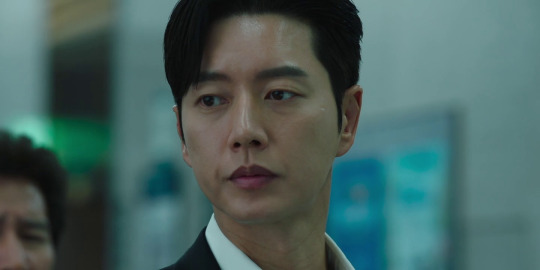
(That's not his first moment but I like this cap.)
However, to my pleasant surprise, as I expected to be forwarding for a few glimpses of PHJ, I really really REALLY like the dark and unhinged the first episode.
The set-up is fairly simple, a little like Devil Judge Only Not Legal. Basically some mysterious dude sends "questions" to all citizens of Korea to vote on whether some criminal who escaped sufficient punishment should die or not; if majority votes yes, he kills them. The government is in uproar and forms a team to track the man down. Park Hae Jin's character is the leader of the team (about him more later.)
OK, why do I love it? It's a very dark show - I don't mean just visually (so many scenes take place at night) but narratively - the place is portrayed as a cesspit of humanity and nothing is clear cut. In fact, the drama very interestingly (it remains to be determined if they will develop it properly) posits of how much everyone is on continuum of vigilantism and what is acceptable. For example, our protagonist, the cop played by PHJ is, while clearly not a murderer, is hella unhinged.

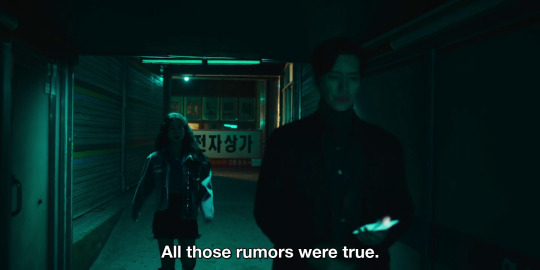



He himself is a vigilante with a badge, which can be a very dangerous thing (we don't know why he is so relentlessly driven but if I were a betting person, I'd bet that scene in the prologue, where he had to arrest a man who killed his daughter's killer because said killer walked is one of his goads.)
Honestly, one of the big draws to me is just how utterly unhinged he is. He really has no stops. Look at him with the human trafficker:




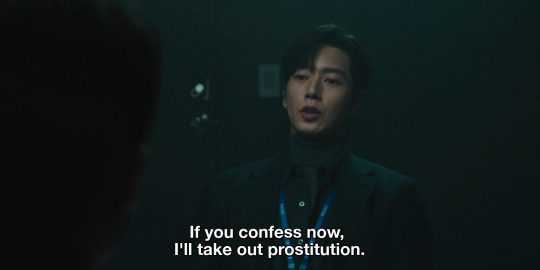

And then he makes sure the camera won't catch it and bangs his own head on the table a few times as hard as he can until it bleeds. !!!!!!!


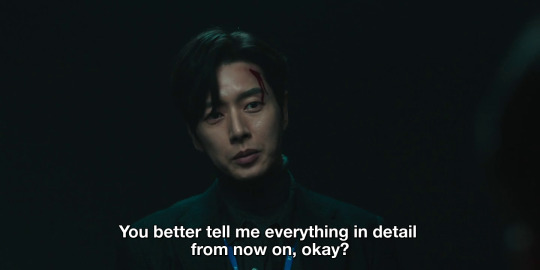

He has no stops and you begin to wonder if it's really a difference merely in degree of extreme between him and the killer he is supposed to catch. You can tell a large part of him sympathizes.


The matter of fact his assistant says as he's bandaging up PHJ's face after that little stunt says volumes.
One of the reasons I love PHJ is his unnerving intense vibe on screen - he can play someone where you don't know if they will be loving or they are secretly a serial killer, and do so incredibly convincingly. (The first drama I've seen him in was East of Eden, a sprawling epic of nurture versus nature, where he was the swapped at birth bio son of a noble worker brought up by evil businessman and he was magnetic and repulsive all at once - his "father" was so unhappy about him having genuine feeling for the girl he was obsessed with since childhood, he paid someone to drug and force him into sex and later sonny turned around and raped the girl he was obsessed with since childhood because monsters and abuse beget monsters and abuse. Childhood friends to rapist and victim is quite an arc. The drama tried to later redeem him with mixed success - it was a vvvvvv long drama - whether it worked out is something up to each viewer to decide - I - am biased by his hotness in the safe confines of fiction - but he was a truly fascinating character to watch.) The whole episode he is so on edge; you can see it burn in him when he has to protect the scumbag who got early release despite being a rapist, abuser etc etc and a part of him definitely sympathizes with the killer who eventually does the man in. His no holds barred character appears to be why despite his insane success rate he's not promoted and disliked by higher ups. He and cyber whistleblower cop girl both appear to be not good at fitting in.


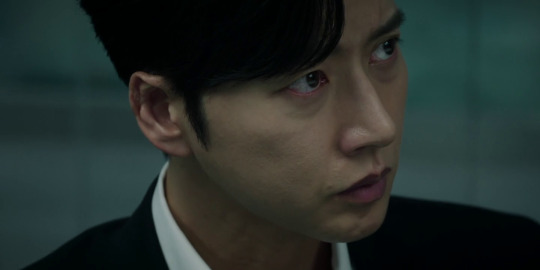
This is not a drama that is likely to have any romance (alas) but I actually do like the vibe between them - they are very very different but both pretty damn unhinged.
PS This bit from East of Eden is basically what crack is like:
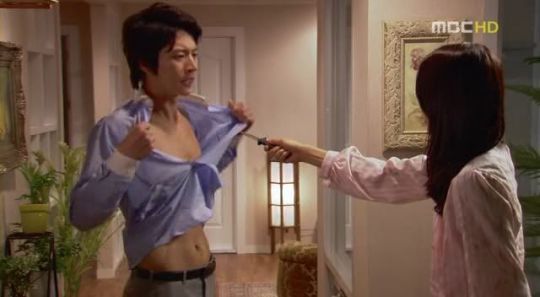
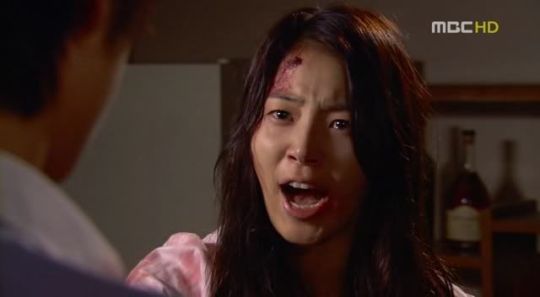
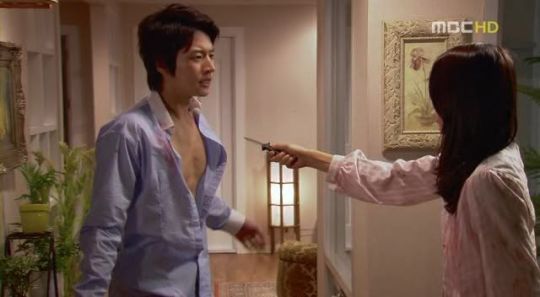


Here is Park Hae Jin ripping open his shirt so as to make it easier for Han Ji Hye to stab him. Ahahahaha god I miss old kdramas and their insanity.
88 notes
·
View notes
Text


Ranking all GW2 Specializations
by 1) Gameplay and 2) Visual
based on over 15k hours of playtime, supported by badly drawn Elite Spec Icons.
Feel free to make your own version and reblog or @ me. I wanna see your reasoning :3
Explanations, sorted by classes, below:
Elementalist
Base Elementalist: Pretty sturdy gameplay. Features both interesting interactions, as well as great utility. Versatile, and visually okay. Attack animations desperately need cleanup.
Weaver: Elegant gameplay. Flows smoothly during combat and offers great utility. Also has nice defensive options available. Requires experience and thinking ahead to pull off. Visuals are okay, and feel like a great fit for the aesthetic without being too overwhelming. Especially love Weave Self.
Tempest: Really cool playstyle. Requires a similar amount of attention as Weaver, but in a different way. Unmatched breadth of utility within elementalist classes. Could even be a contender for top spot at visuals, but Fire Overload visually drags the whole spec down.
Catalyst: This class has no right to exist. It feels like someone said "Elementalist doesnt deal much damage, let's give it some numbers." and then stopped halfway through. There is no utility, no elegance, no cool interactions with the gameplay. The whole class feels restrictive and clunky to use. If you like the hammer cata playstyle, better play Weaver. If you like nice interactions, play Tempest. Jade Orbs dont feel like a mechanic, but a punishment. Visually boring, horrible UI, aweful animations.
Mesmer
Base Mesmer: Elegant gameplay, but lacks flow in certain edge cases. Kinda wish greatsword was more melee, but with range capabilites. Needs some more fun interactions with its own mechanics.
Chronomancer: Essentially Mes Plus, when compared to Base Mesmer. Great gameplay, fun and flowey. Slightly choppy in some millisecond cases, but still amatzing to play. Visually striking, absolutely mindblowing sound design. Continuum Split could use a more impactful visual design, like a giant illusiory asronomy clock that ticks down.
Mirage: The self contained version of Mesmer. Lacks a bit in support options for allies, but offers elegant gameplay if timed correctly. Visuals are adequately unique, sparkly but still not overwhelming. Does not have the visual Boom that Chrono has, but feels just that more natural.
Virtuoso: What if took anything that that means Mesmer and just. Didnt do that. This class feels not like a Mesmer anymore, mechnically speaking. Lacks support options, and is outshined by Mirage when it comes to PvP gameplay. Also I'm so fucking pissed at the daggers floating constantly above my head. Animations are kinda cool, though a bit overwhelming.
Fun Fact: I divined the coming of the Virtuoso in some sketches a while before EoD previewed. Though in my head it was a Guardian Spec, shooting small silvery stars with its Virtue skills. AND it had double Daggers.
Necromancer
Base Necromancer: It fills its role as master of death. Even the base version of Necromancer has impactful gameplay, and both okay utility, damage, and support for allies. Lacks elengance at some points, especially in Shroud. Visually okay, could use more explosions.
Reaper: Death Knight, here i come! Reaper offers amazing visual effects, and both impactful and flowey gamplay. Reaper Shroud has just the right oomph to make it feel like the steamroller it is. Even when playing without quickness during shroud, it feels amazing. The slight sluggishness just adds to the experience. Did you know that when you enter Reaper Shroud, the character grows giant feathery wings that explode within the fraction of a second? So fucking beautiful.
Scourge: As the absolute opposite of Reaper, this spec offers exactly what Reaper lacks: impactful gameplay at range. Though Scourge can absolutely hold its own in melee, this version feels like a true death mage. Only issue i have is that it's yellow. Horrible choice.
Harbinger: Why does it exist? Ugh, this thing feels so boring. Harbinger would've been a better fit as an Engineer spec. I don't even care about the utility of those damn potions, they lack uniqueness, aesthetic, even the skill icons look like placeholders. What does it have to offer? Well. It gives quickness. Though you could just use a Chronomancer Relic and play another spec. And why am i a black cloud midfight? hello?
Engineer
Base Engineer: The epitome of improvisation. Toolbelt, weird inventions. Explosions, potions, flamethrower. Engineer feels like Elementalist without the magic. There's amazing interaction between skills, great offensive and defensive options. Engineer feels like a hectic class at times, but with some experience it can just be as chill as any other class. Could use some more striking visuals, but still okay.
Holosmith: What if we take an Engi and give it just a smidge of magic? Holosmith feels like an extension of Engineer that pushes it into a slightly different direction. It's just as versatile as the base version, but has even better options for agressive gameplay. Playing a Holo feels elegant and has just the right amount of sparkle and whoom. Still has good interactions with other players, but can easily hold its own. 10/10 design.
Scrapper: Essentially the opposite of Holosmith. What if Engi, but even LESS magic? Though Scrapper can feel a bit sluggish at times, it still has a nice gameplay. Same issue as Base Engi though, it needs more sparkles.
Mechanist: Why put training wheels on something that already has so many levels of gameplay? Mechanist feels like the worst option in any situation. The only saving grace may be the alacrity (which is applied in the most horrifyingly braindead way possible). There's no visual connection between Base Engi and Mechanist, neither in color nor in shape. Why is the mech so that? The gameplay would feel more fluent if you just kidnapped a new player from Queensdale and gave them a gun. Would also be easier to handle than that damn mech.
Thief
Base Thief: There's elegance here, but it's quiet. The visuals underline the subtle beauty of this class. Even a base Thief offers nice utility and okay interactions with other players. The only reason i placed it that low is because how stealth works. A better idea would be to replace it with something like Blur, maybe granting a 50% chance to automatically evade an attack and avoiding being directly targetable in competitive modes.
Daredevil: This is the oomph Thief needed. it feels like it hits hard, but with deadly accuracy. You lose a bit of stealth capabilities, which is a plus in my opinion. Essentially, this is what a monk class in other games would be. It doesn't even need much utility by itself, base Thief already has a bunch. Only issue i have is that i would love it actually using fists to fight, preferably in addition to a staff. Maybe could leave weapons unequipped to swap to an unarmed fighting style? Fun though, great design.
Deadeye: The absolute opposite of Daredevil. This sharpshooter class prefers intelligent positioning rather than quick reactions. It offers great damage and okay support capabilites. Visual effects appear perfect for this class, though the sound design is only okay. Definetely needs a better interface for displaying Malice stacks. And maybe remove the casting time of Deadeye's Mark?
Specter: What if Necromancer, but. Not. Playing Specter feels like playing Core Necro, but with more teleports. Wells are, well. They exist, but only barely. Visual effects are underwhelming, the while class lacks the feeling of impact or elegance that even a base Thief has.
Ranger
Base Ranger: I can see how people like playing ranger, but only through a vaseline treated camera lens. The class itself has okay utility, but lacks in interaction with other players. Though a Ranger's defining feature is the pet, it's also its biggest flaw...
Soulbeast: ... which Soulbeast 100% solves. I will continue to ignore Base Ranger and just pretend that Soulbeast is what Ranger was always supposed to be like. Soulbeasts have the option to just. Not do the whole minion managing thing. Stances feel elegant and unique, and bring fresh air to a moldy base class. Really cool visual effects, though i wish i could turn off the green swirlies while merged.
Druid: I was in Druid Jail for most of my raiding days, so i know what i'm talking about when i say "Urgh." The base mechanic of a Druid is the Astral Avatar, which by itself is probably the best thing Ranger has to offer. It's pretty, it has boom, it's actually useful and elegant. The issue here is swapping in and out of it, which feels clunky and more of a hassle that a reward. To heal with the Avatar, you need people to take damage, so you can heal them, which fills the Avatar, which allows you to. heal. them? Better solution would be to make it similar to Firebrand Tomes so that it still needs energy to use skills, but allows you to spread out your healing a bit.
Untamed: What if Soulbeast, but. Thief. Well, the result is a clunky mess that looks like a swampy lump of bonk. Probably makes a wet smoph when it his a wall. There is no way for me to enjoy this class. The supposed flow of a good Untamed rotation is completely unknown to me, simply because it's so damn ugly. Play Soulbeast.
Warrior
Base Warrior: Hello, yes, it's the bonk class. Love it, have it, it still bonks. What looks like a braindead brick only people with a real life play, is actually an ornate pattern of golden filligree. A base Warrior offers elegant and flowy gameplay at a minumum of effort, and can with some experience still weave itself through the flow of battle. Wish it had more fun interactions with allies, aside from Shout skills. Could go great with Wells.
Berserker: Warrior, but with more bonk. There's exactly two issues i have with this spec. One, its visual effects feel lopsided. Needs more boom toward the target, and less burning man on myself. Two, it lacks utility. However, any rotation that's done on Berserker flows perfectly, it feels fast paced and has absolutely perfect sound design. Executing a perfect Axe/Axe feels like playing a rythm game in the way it bonks.
Spellbreaker: Less bonk, more tshink. Spellbreaker feels like someone took the best about a Thief and put it on a Warrior. The playstyle between Daggers and Full Counter feels elegant and smooth, but requires good reaction. Spellbreaker shines versus players rather than against monsters, which is probably the only issue i have with this spec. Beautiful shiny glitter sparkle capacity though.
Bladesworn: Okay, it says on the tin that it contains Flow, but no. Bladesworn trades movement for maximum bonk. Could use more elegance in its skills, but it makes up for it with great bursts, so much that you can almost feel pixels being cut. The absolute worst about this spec, and the reason why it's not in the legendary tier for me, is that damn Gunsaber. It either needs to be broader for more bonk (with a powerful downward strike as Dragon Trigger), or about 50% longer for ultimate tshink (with a ligering silver sparkly line where the blade sliced your pixels), you know what i mean? As is, the class feels like the definition of blue balls.
Guardian
Base Guardian: The first time I solo'd Twilight Arbor's Aetherblade Path was on a base guardian, some time before HoT. I used a mace and a shield and just slowly pummeled my foes to death. Base Guardian has the feeling of a true paladin class, with just the right amount of sparkle and utility. Only reason it's not way higher on my tier list is that it cant do much on its own.
Dragonhunter: Such a beatifully executed class! There are aesthetic parts that make Dragonhunter feel like a holy warrior, but without the support capabilites of a true paladin class. That's a good thing, by the way. Its playstyle feels unique, at most comparable to a Warrior, but just barely so. Dragonhunter has some small group support, but shines with utility and bonk. If it wasnt for the Traps' visual effects, i wouldnt even care for those (excep Dragon's Maw, like wow). The whole class is perfect. Would've been higher on the list if the rotations felt just a bit smoother.
Firebrand: This one is a more support oriented Guardian. It overflows with utility and support skills. Factually speaking one of my favorite classes. Speaking from a balancing standpoint, it can do way too much at once with its Tome skills. There's elegance in this class, mostly due to it being filled with skills to the point it overflows. Visually, amazing work, same goes for the sound design.
Willbender: A movement based version of Guardian. Willbender feels like it tries to be a monk class, but somehow misses still. There's something lacking from the whole design. You could probably slap this spec onto any other class and it would still work. Together with base Guardian skills, it's fun to play though. Still a balancing horror, for the same reason as Firebrand: It can do way too much for a single class. Aesthetically i find it absolutely revolting. I get that the Virtues are supposed to be movement skills, but they feel choppy to use and leave red-blue scorch marks on the ground. These weird trails look like an accident and are outshined by most other base Guardian skills. All over, a meh rating.
Revenant
Base Revenant: I am regularly confused when i see this spec's icon. There is absolutely no reason to play a base Revenant. There's not much reason for me to play Rev anyway, but hey. What i love about it are the Legends. What i hate about it. also Legends. There's utility and versatility, but both are locked behind Legends, which makes the whole class feel rigid and choppy. I am a fan of the energy mechanic though, and the visuals are also kinda pretty. Could use more sparkles though, maybe more in the Necromancer direction.
Herald: Since Rev came out with HoT, it released with its elite spec from the start. And to this day, Herald is the actual Base Rev to me. It sparkes, it bonks. It feels fine to play, not under- or overwhelmingly so, but just. pretty okay.
Renegade: This one feels like a base Rev (not Herald, in this case). It had the advantage of using a shortbow when it released, but since SotO it lost its usefulness to me somewhat. The Renegade Legend's skills are fun; somehow like Well skills, but visually more striking. The rest of the spec is only meh.
Vindicator: Another one with more bonk! Equip a Stamina Sigil and go stomping! Vindicator feels fun to play, has nice visual effects and great sound design. Similar to Reaper, you can really feel the bonk. Absolutely hate the double Legend thing though, it feels choppy and sluggish to use, similar to playing Elementalist while affected by Chill. I would love Vindicator on another class, like Warrior for example. But since it's a Rev. It's a No.
Conclusion, Expansion based:
EoD specs generally feel the worst of the bunch. booooring. There's no EoD spec in the game that i can really enjoy playing.
HoT specs feel bonky, but slower. On par actually with the whole maguuma jungle (except Pocket Raptors. wtf was anet thinking there)
PoF specs feel less bonk, but more elegant. Also matches the Crystal Desert (except Hydras. THOSE feel more HoT than PoF)
Elementalist is my favorite overall, followed by Mesmer, Engineer, Guardian and Necromancer in that order. Revenant and Ranger can dissolve into brown slidge for all that i care.
#gw2#guild wars 2#this took me 2h to type - you better interact with it you goblins#i made rev teal colored to complete the rainbow - fight me.
43 notes
·
View notes
Text
i think i almost made myself legit cry with this gunter/corrin doujin arrangement now lmao, good job krad
ok so workshopping out loud:
it's not set in stone but b/c most existing art pieces are YRMR related i'm sort of loosely arranging this doujin in three "arcs" like revelation / the YRMR fic: (1) northern fortress, (2) the romance, and (3) all the shit that goes down in valla.
eventually i'm probably going to make other gunter doujins (conquest-verse? one that's only possession (sexi times) related? etc). generally by now i make myself a rule i have to have at least 20 pages of drawn junk before i even entertain the thought of a doujin.
but to go back a little; i want this (first?) doujin to be able to exist as a standalone piece of art where you don't have to know shit about YRMR. you can, and it'd enhance the experience if you go 'oh shit that's the first proposal scene!!!! :D', but you don't have to.
and like -- if 'what's the abuse of power' was my anchor-lodestone phrase for the fic, i think contrast is going to be the visual lodestone for the doujin.
cuz that's the cool thing visually with gunter/corrin, right? big/small, young/old, whip/ball, possessed/unpossessed, death/life, etc etc. i'm not good enough art wise to go super abstract yet theme-wise, and something as simple as "contrast" pairs really nicely with my general focus on body language. and i'm picking back up a few pieces where i was using an interesting inky/smoky watercolor look paired with the thin lines -- like uhh these three --

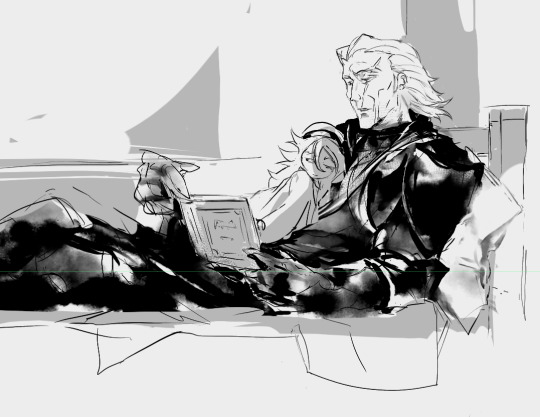

-- and it looked pretty good together. i think that's going to help balance the chunkier lineart of the comic pages.
hell even just squinting at it here minus the tones. yeah i think it does.
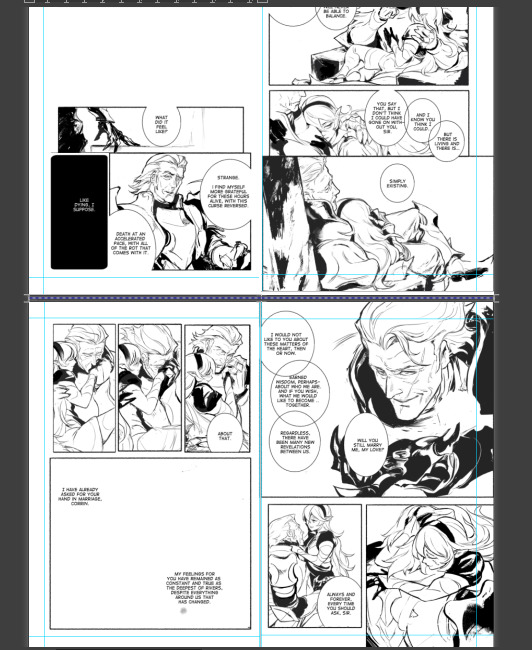
(i can finally show more of this comic considering it's yrmr's very last scene. ;D )
so with those pieces set, i can subtly lean into paired pieces like this where the rest of the doujin is more visually "noisy" with 2 page comics and filled doodle-boards, but then you get :

(first piece is gonna be in greyscale; this whole thing's gonna be in b/w)
you see what i mean? the emotional contrast + stitching is there, where the "silence" + "absence" of the page straight up accentuates the feeling. you don't have to know what goes down in YRMR to go 'ouughhhh hurt/comfort' (frankly imo the unusual rougher lineart of the last piece even accentuates that.)
contrast. contrast, contrast, it's gonna be about contrast.
now you might think 'krad this is seriously overkill thinking for a doujin' and like. if it were a simple indie artbook. where you just slap illustrations together. i'd agree 100%.
but. an artbook is not a story. comics are. and there's a continuum between really good comics <=> design <=> illustration pieces as a collection going bang-bang-BANG, rather than just 'pretty picture x10'
alternatively, picture this as krad (more accurate):

#gunter doujin numero uno liveblog#< WELP here we go again#is this what pernament brain rot damage is like :D
19 notes
·
View notes
Text

COLLAGE ON VIEW
Layers: Humus of Time
Susanna Lakner at Zero Arts in Stuttgart, Germany through 2 February 2024. Susanna Lakner’s collage art is about the question of how it is possible to thematize the space-time continuum. How can old pictorial elements be catapulted into timelessness by combining them with new materials? For the works in this show, Lakner combines collages of old reproductions and illustrations with completely banal cardboard boxes from the post-COVID present with the aim of creating an entity that has fallen out of time. There is no past, no future, there is only the present, where the layers become humus. The humus of time. Read More
*****************************
Kolaj Magazine, a full color, print magazine, exists to show how the world of collage is rich, layered, and thick with complexity. By remixing history and culture, collage artists forge new thinking. To understand collage is to reshape one's thinking of art history and redefine the canon of visual culture that informs the present.
SUBSCRIBE | CURRENT ISSUE | GET A COPY
SIGN UP TO GET EMAILS
#collage#collage art#collage artist#art#artist#art history#art project#art show#art books#art education#book art#artistic#contemporary art#artwork#modern art#artist profile#artist book
25 notes
·
View notes
Text
Where on the "visualize a protective bubble" to "nails and piss in a jar" continuum of protection spells would you say you typically fall?
God I can't wait to be informed a dozen times that nails and piss in a jar is not the extreme end of the spectrum and is pretty tame and normal, actually.
749 notes
·
View notes
Text
now see you'd think it might be impossible or at least difficult to travel faster than light, but it's actually relatively easy to do given a certain level of advancement in space travel technology. the hard part is anyone being able to figure it out given the limitations of human logic and spatial reasoning, traits which evolved perfectly for day to day life in the jungles and savannahs of sub-Saharan Africa but are less perfect for visualizing the ways in which photons interact with the "material" of the four-dimensional space-time continuum we exist in. the only person to actually ever perfectly understand the reasons for the speed of light limit and how to surpass it was a 15-year-old Carthaginian boy named Gersakkun, who was an army messenger during the Second Punic War and was crushed top-down by a panicked elephant foot during the climactic Battle of Zama in 202 BCE which sealed the fate of the war against Rome. the force and angle of the blow combined with a momentary quirk of the Earth's magnetic field and otherwise unnoticeable interference from a solar flare caused his neurons to align for 43,107 picoseconds in such a way that he visualized the exact form of the universe in its entirety and reached a kind of nirvana state before the connection was broken and his body was mulched into non-existence, which is another kind of nirvana state. the spot briefly became host to an Aleppo pine (grown from part of a pinecone which had been lodged in the elephant's sole), which would have become the only tree to understand light travel, but only grasped rudimentary Newtonian physics by the time it was razed during the chaos of the Third Punic War 55 years later. the problem has otherwise remained completely unsolved.
40 notes
·
View notes